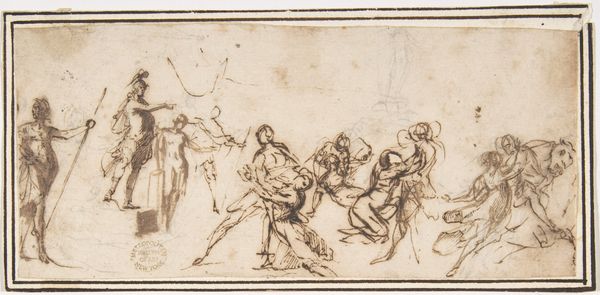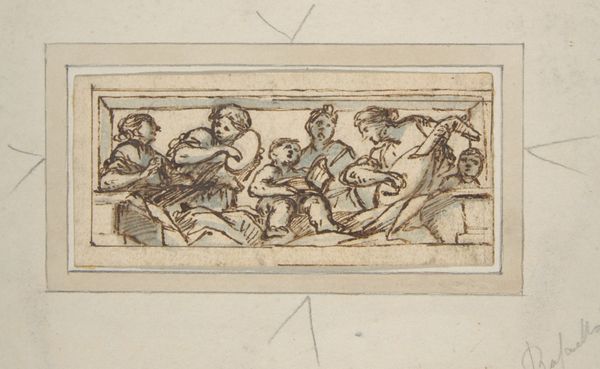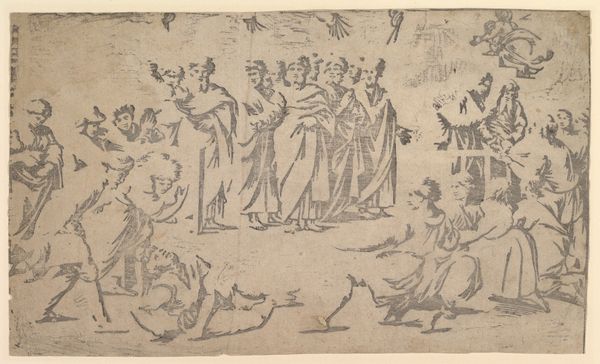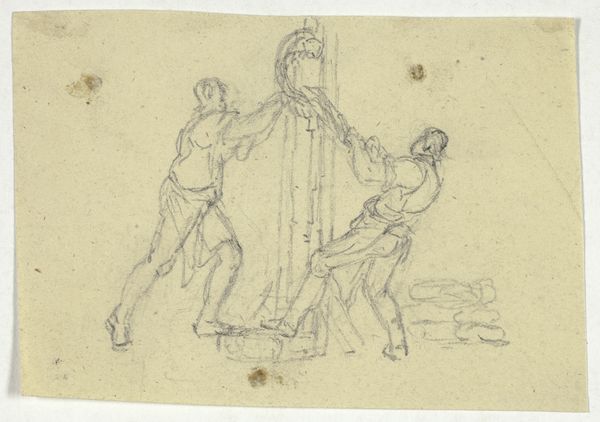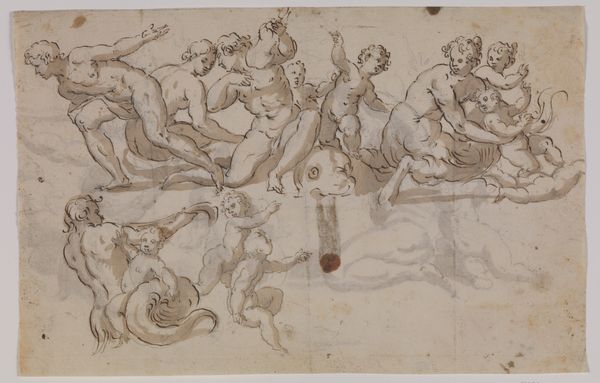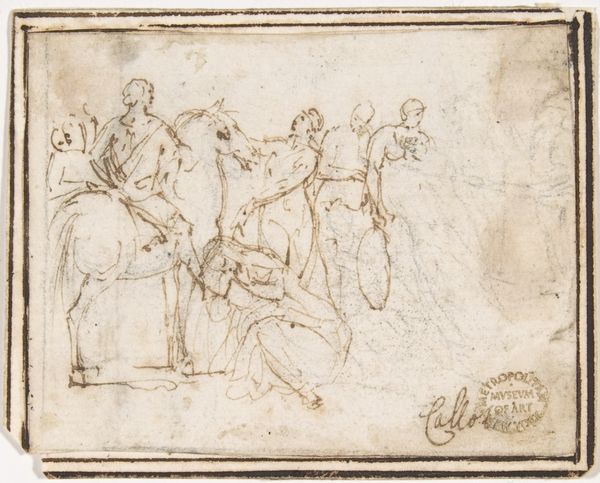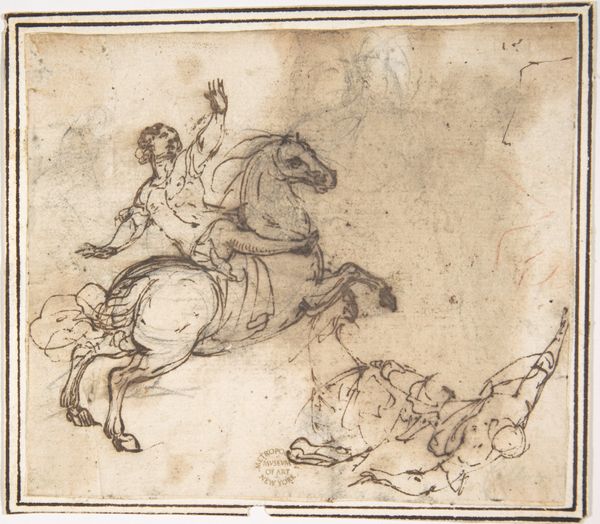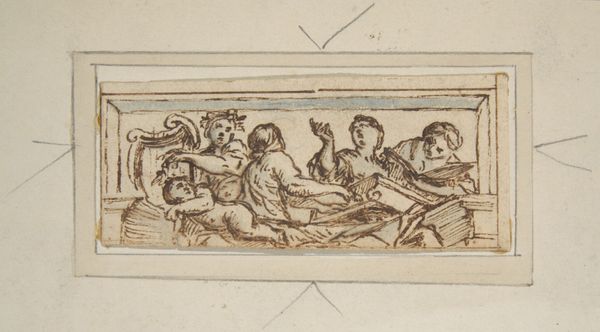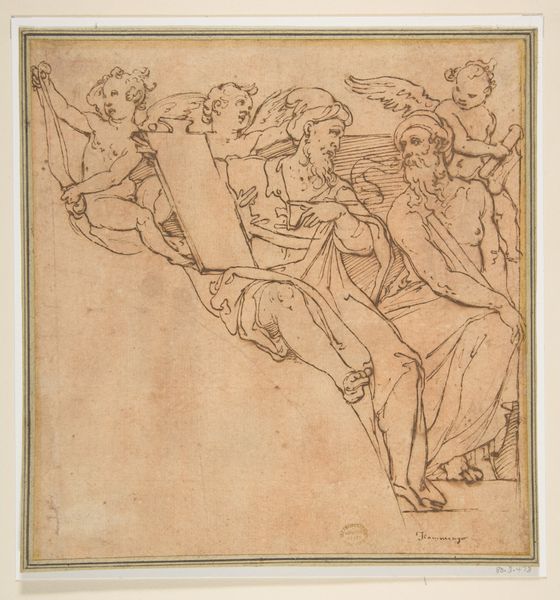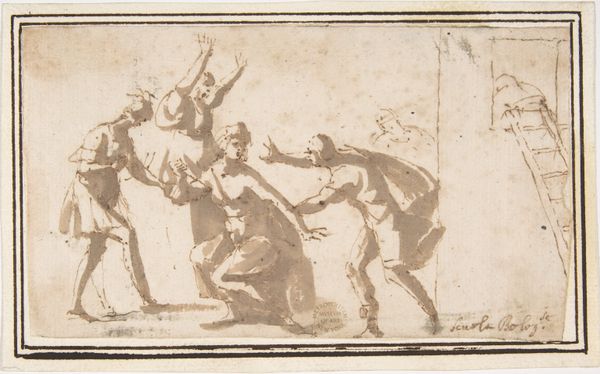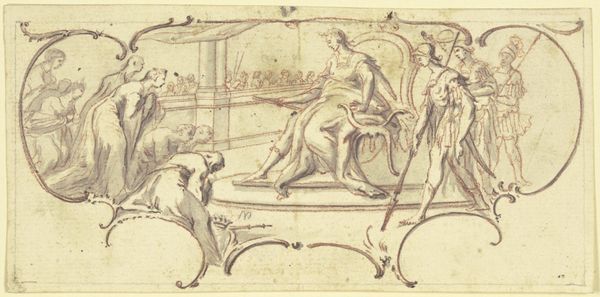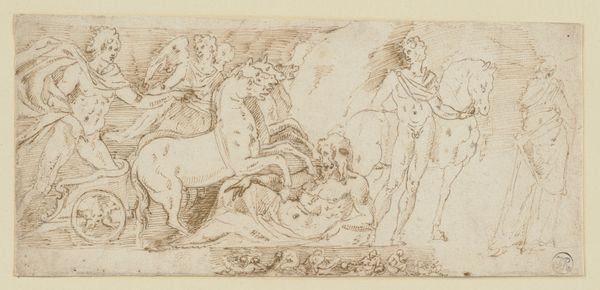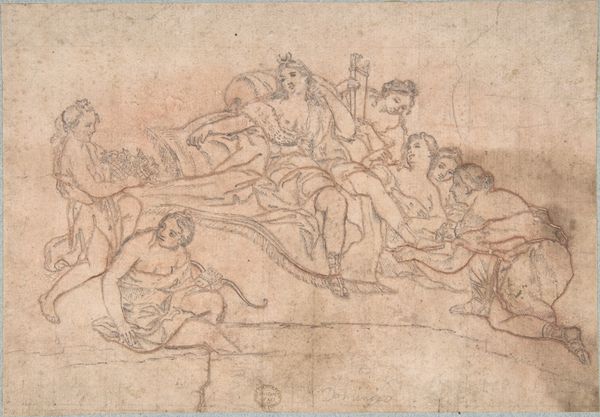
Unidentified Subject (Nine Figures and a Horse) 1624 - 1663
0:00
0:00
drawing, ink, pen
#
drawing
#
narrative-art
#
figuration
#
ink
#
horse
#
pen
Dimensions: 2 1/2 x 4 in. (6.4 x 10.2 cm)
Copyright: Public Domain
Curator: This ink and pen drawing is cataloged as “Unidentified Subject (Nine Figures and a Horse)” by Francesco Allegrini, and it’s estimated to have been made sometime between 1624 and 1663. It’s part of the collection here at the Metropolitan Museum of Art. What stands out to you initially? Editor: The frenetic energy. There's a swirling sense of implied motion, heightened by the sparse use of line. It's a chaotic scene, really, but anchored by that prominent horse on the left. It makes me consider the materials employed; what type of ink, paper and pen afforded the artist the capability of implying action within a sparse rendering of nine figures and an animal. Curator: Exactly, the frenzied narrative does lend itself to broader social commentary. Note the composition itself; a flurry of figures seemingly engaged in conflict. What might it tell us about the prevailing cultural climate and societal tensions of 17th century Europe? Consider also the patronage system; how might commissions influence the production and dissemination of such works, shaping artistic expression to align with particular agendas? Editor: The quality of the line and application reveals the artist's method—hatching and cross-hatching define form, suggesting the speed and deliberateness in their execution. But back to material… Do we know the origin of the ink? Was it a commercially available product, reflecting burgeoning trade networks, or something concocted within a personal studio? Curator: An excellent question. If the ink was imported, let's say from the East, how does this small, readily portable drawing become a point of entry, demonstrating the ebb and flow of resources during Allegrini’s era? The presence of this drawing also underscores the increasing public engagement with art during this era. Museums started to codify artistic merit and meaning. Editor: Right, let's also think about that bounded labor to produce the art: from cultivation of resources for making ink, harvesting plants to be used as a drawing implement or to the commerce or extraction of resources from one geopolitical boundary to another to then be assembled into something to communicate some form of established hierarchy. Thank you for providing an informative reading. Curator: Thank you, your assessment of this piece considering it as the nexus of many cultural and economic realities adds significantly to the record of art history of the age.
Comments
No comments
Be the first to comment and join the conversation on the ultimate creative platform.
